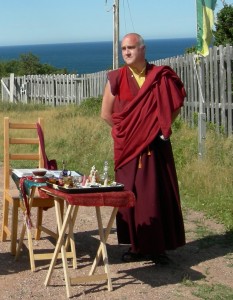Tuesday
Mandala ProjectsNew Teacher Guidelines: An Interview with President Reoch
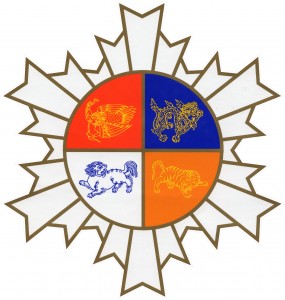 For many years, Shambhala Centres have invited a variety of Buddhist and other teachers to give teachings, instruction, and abhishekas, or empowerments. Some of these invitations have been made at the request of Sakyong Mipham Rinpoche, and before him, his father, Chogyam Trungpa Rinpoche; other invitations were made by the centre leadership.
For many years, Shambhala Centres have invited a variety of Buddhist and other teachers to give teachings, instruction, and abhishekas, or empowerments. Some of these invitations have been made at the request of Sakyong Mipham Rinpoche, and before him, his father, Chogyam Trungpa Rinpoche; other invitations were made by the centre leadership.
At times, individuals have invited teachers into the mandala without the knowledge of the Kalapa Court or even by their local centre leadership.
In order to facilitate better communication and to support an integrated approach to teacher visits, new teacher invitation guidelines were recently issued to all Shambhala Centres by the Chair of the Kalapa Council, the senior leadership group that assists the Sakyong and the Sakyong Wangmo in the governance of the mandala.
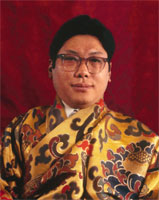
The Vidyadhara, Chogyam Trungpa Rinpoche, the first Tridzin (Throne Holder) of the Shambhala Mandala, devoted a great deal of attention to teaching students how to invite and host visiting teachers.
To bring these new guidelines to the attention of the wider sangha, Shambhala Times was delighted to interview President Richard Reoch (who chairs the Kalapa Council) recently about the guidelines and why they are being issued at this time.
A link to the new Teacher Invitation Guidelines is included at the end of this article.
Shambhala Times: Why are these guidelines being introduced at this time?
President Reoch: The Sakyong was supplicated by a number of centre directors to give greater clarity about inviting teachers. He first spoke about this at a gathering of the Shambhala leadership that took place in Boulder in late 2006. As a result, we did a survey of all Shambhala Centres and presented the results to the Sakyong, after which there has been a long period of consultation that resulted finally in the updated guidelines that were sent out just after Shambhala Day this year.
Was there some incident or relationship that caused these guidelines to be produced?
No, it was rather the need to have an updated set of guidelines that would resolve some of the confusion that centres have experienced over the years.
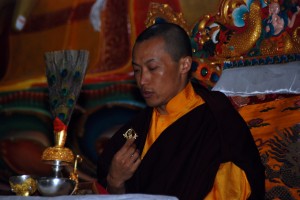
All invitations to teach in the Shambhala Mandala are extended on behalf of The Sakyong, Jamgon Mipham Rinpoche.
How do these guidelines relate to the Sakyong’s announcement of his yearlong retreat?
There’s no connection, but having these updated guidelines has already proved useful. For example, the Sakyong has been personally able to advise on programs, teachers and topics to be offered during his retreat, which will start from the middle of November this year.
What are the major changes with these new guidelines?
Much remains the same, but there is a lot more clarity about how we should be going about inviting teachers. For example, the guidelines remind us that all invitations to teach in the mandala are, in fact, invitations on behalf of the Sakyong who is the Tridzin, or Throne Holder, of the mandala. The Sakyong has also made it clear that he would like, at the very least, to be acquainted with all of the teachers invited to teach within Shambhala.
So, obviously, centres are more than welcome to invite teachers who are already well known and teaching in the mandala. But when considering inviting new teachers, centre directors need to refer this to the Sakyong before issuing an invitation. The Sakyong has been making himself readily available for consultation.
Centres should email their questions to bhikshu Lodro Gyatso, formerly of Gampo Abbey, who is now part of the Office of the Kalapa Court. His email is [email protected].
The Sakyong has also made it clear that from time to time, he will also suggest teachers whom he would like to teach on specific subjects. Another important clarification is that invitations should be issued by the leadership of the Shambhala Centre, not individual members, which has sometimes happened, causing confusion. These are some of the main points. The full text is now online. [See link at the end of this article.]
What can you tell us about the Sakyong’s retreat?
The next year in the Sakyong’s life, will be his 48th year. There has been long-standing advice that this should be a year of retreat for him, to preserve his energy and help ensure his longevity. He has been thinking a lot about how he will spend it, probably with some time spent in retreat in Asia and some of the time in the West.
Who will lead the spiritual direction of Shambhala during that time?
I think it’s important not to think that because the Sakyong is in retreat that therefore he is not playing his role as our spiritual director. Indeed, his retreat is an integral part of his spiritual leadership of our mandala! He is considering how to ensure that he can also respond to specific requests. For example, he has been supplicated to give various transmissions during the year and he is considering how he can do that in a way that maintains the spirit of his retreat while, at the same time, being of benefit to our community of practitioners.
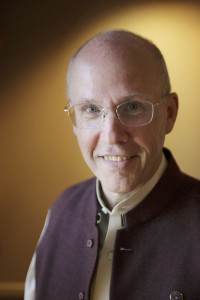
President Reoch has been asked by Sakyong Mipham Rinpoche to work closely with him in developing Shambhala's international relations.
Will the president assume more powers during the Sakyong’s year-long retreat?
I don’t think anything like that will be necessary. We now have a fairly well established system of governance for the mandala. This provides continuity, is able to consult with the Sakyong as necessary and receive his wishes. It worked well during the four-month period of the Rinchen Terdzo, and I expect the Sakyong’s year of retreat will be something like that.
Will the acharyas be assuming more powers?
The Sakyong has been very keen for us to understand the key role played by the acharyas. I think that’s more to the point than their needing to assume more powers. He made this very clear when we were working with him on the new guidelines for inviting teachers.
For example, he made it clear that in general he would like refuge and bodhisattva vows within the Shambhala mandala to be given by acharyas acting on his behalf. They are empowered to act as his teaching representatives and as preceptors for these vows. A distinctive feature of taking refuge within our mandala is that people are given The Practice of Taking Refuge, Arousing the Motivation for True Freedom from Samsara during refuge vows. The acharyas present and teach this practice on behalf of the Sakyong when giving refuge vows within Shambhala.
When he was reviewing the draft guidelines at one point, the Sakyong said, “This is a time when our acharyas are mature enough to handle many of the responsibilities and teachings previously requested of visiting teachers. We can now depend on the acharyas.” As another example of this, the Sakyong has asked acharyas to take on further responsibilities with the vajrayana seminary in 2010. He himself is planning to come out of retreat to give the vajrayana transmission at that seminary.
What is Tridzin or “throne holder” and why is this important? Also, why the change from “lineage holder”?
A Tridzin is a lineage holder, but the term has a special meaning in relation to the governance of a mandala. The Sakyong, for example, holds several lineages – now including the lineage of the Rinchen Terdzo. But in relation to the large and intricate mandala of Shambhala, he holds the position of Tridzin, the central figure in all spiritual and secular matters as they relate to the governance of Shambhala.
What did the Sakyong mean, in these new guidelines, about striking a balance between teachers who are already teaching in the Shambhala mandala and the need to keep a clear focus on our unique terma tradition?
The Sakyong was very clear with me about this point, and what is in the guidelines is almost word for word what he said. He wants to be clear that the distinguished teachers who have for years enriched our path of practice and education are still very much welcome as teachers in the mandala. At the same time, with the new curriculum and the opening of the path to the Scorpion Seal retreat, he is asking us to have a sense of focus on the mind-terma of the Vidyadhara. He is clear that those teachings and practices are needed in this Dark Age and he wants us to deepen our connection with them.
How is the central structure for relating to teachers changing?
The Sakyong decided that the international relations of the mandala should be coordinated through the Office of the Kalapa Court and that I, as the Chair of the Kalapa Council, should be principally responsible for this. Therefore the work of the previous Office of International Affairs is now subsumed into that office.
There are some new faces. Bhikshu Lodro Gyatso will be the first “port of call” for inquiries from centres with questions about inviting teachers. Michael Gayner, from Toronto, who previously served as a traveling attache to the Sakyong, has been appointed Head of Protocol. He will assist me in relating not only with major teachers, but also with the increasing number of public figures making contact with Shambhala. In Europe, Frank Stetzl will continue to play the coordinating role he has previously, and Peter Volz, formerly Head of the Office of International Affairs, will be a senior advisor on international relations during this transition period.
I have also been working to establish a group of acharyas who will be available to act as high-level emissaries to build and strengthen our relations with lineage holders and teachers on behalf of the Shambhala Mandala.

Michael Gayner, from Toronto, who previously served as a traveling attache to the Sakyong, has been appointed Head of Protocol
What impact will these changes have on Shambhala Centres and members?
I hope that the questions that the leaders of Shambhala Centres raised with the Sakyong when they asked him for greater clarity have been answered. The guidelines were sent in draft form to the entire Mandala Council, on which all Shambhala Centres have a seat. We got some very helpful further questions back as a result, which we were able to clarify. Most centre directors who responded seemed to find the guidelines clear, which was the whole point!
During the lifetime of the Vidyadhara, the Shambhala community rarely received instruction from other teachers – other than Their Holinesses Gyalwa Karmapa and Dilgo Khyentse Rinpoche, students of Chogyam Trungpa Rinpoche received all instruction from him directly. Since the Vidyadhara’s parinirvana, a variety of teachers have taught at centers and programs. Can you shed light on this shift, and what is the Sakyong’s thinking of that period?
I’m not sure that everyone would agree with this description of the past. My understanding is that the Vidyadhara invited a lot of teachers and devoted a great deal of attention to teaching us how to invite and host them. The Visit Manual sets this out in remarkable detail.
What the Sakyong told me was that the Vidyadhara invited teachers with whom he had a personal connection and that he would often request them to teach on specific topics so that their teachings would enrich everyone’s understanding of the path he was offering. The Sakyong was clear with me that this was what he too had in mind when working on the new guidelines.
Richard, your letter accompanying the guidelines refers to a series to discussion conference calls. When will these conference calls be scheduled and will they be open to anyone?
We’ll be working on that in the coming month or so. I think we will likely start with a consultation involving those office-holders at Shambhala Centres who regularly are involved with issuing invitations and hosting teachers. We might open up beyond that, if that would be helpful.
Click here to download a copy of the new Teacher Invitation Guidelines, from the members section of the Shambhala website.
Also available online is the Visiting Teacher Manual, issued in March 2009, which can be found in the Member’s Help area under “V” for “Visiting Teachers”, here.

